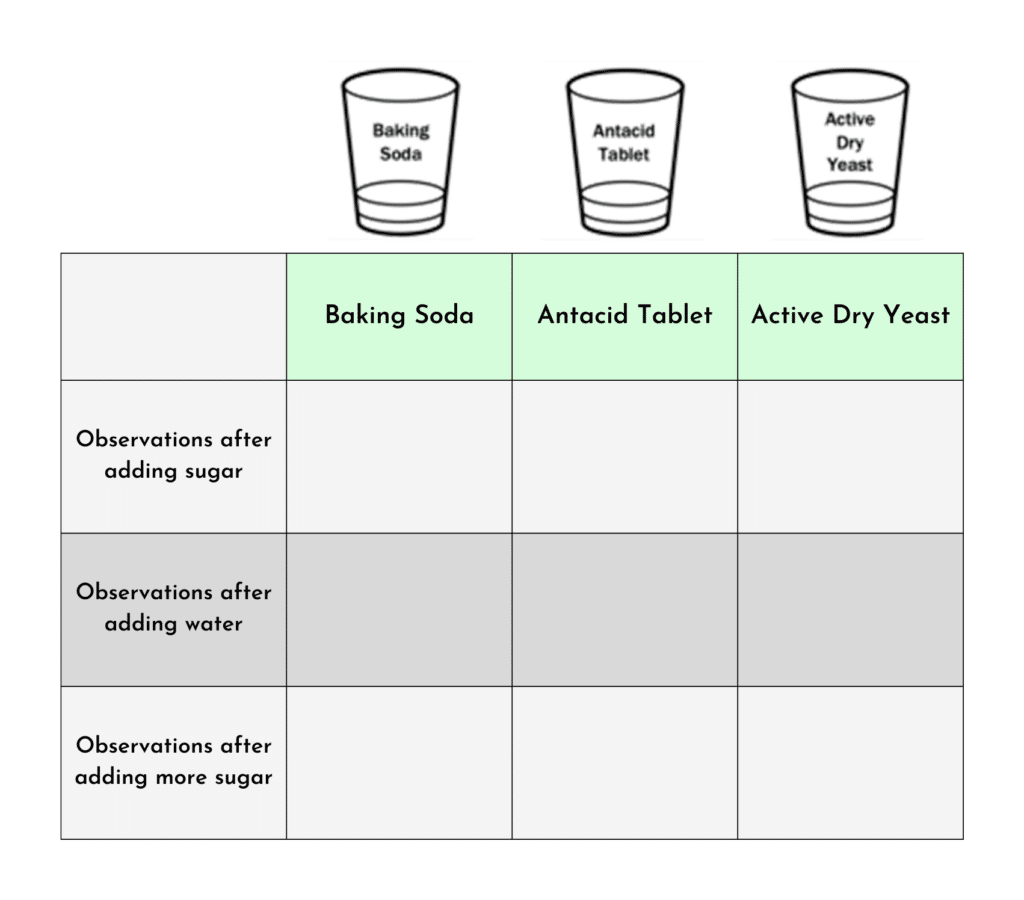Is there life beyond the living creatures on Earth?
Astrobiologists studying life on other planets and moons must conduct careful research to answer this question.
Scientists don’t always agree, but in general, something that is alive can:
- Eat, metabolize, and produce waste
- Maintain homeostasis (internal balance)
- Take in energy from the environment for growth
- Respond to outside stimuli
- Reproduce and evolve
- Adapt to changes
Sometimes, astrobiologists observe something in space that seems alive, but is actually just acting alive.
In this at-home activity, you’ll test three substances – baking soda, yeast, and an antacid tablet. As you make observations, try to determine which substance is alive, and which two are simply pretending! Remember to consult your list of criteria that makes something “alive”.
Materials Needed
- 3 clear cups
- Baking soda
- 1 packet active dry yeast
- 1 antacid tablet, crushed
- Sugar
- Warm water
- Measuring spoons
Step-by-Step Instructions
- Measure baking soda, yeast, and the crushed antacid tablet each into their own labeled cup
- Add 1 teaspoon of sugar to each cup. Make observations.
- Add enough warm water to cover the contents of each cup.
- Observe for 5 minutes – what do you notice?
- Add 1 additional teaspoon of sugar to each cup. Make observations.

Questions to Think About
- Is the baking soda alive? Why or why not?
- Is the yeast alive? Why or why not?
- Is the antacid tablet alive? Why or why not?
- What observations helped you decide which substances were alive?
- What are some signs of life astrobiologists can look for on other planets?
- How do you think astrobiologists tell the difference between reactions that involve life and reactions that do not?
Conclusions
- The baking soda is not alive – it did not display any reaction to the water or the sugar
- The antacid tablet is not alive. You may have guessed it was alive because it fizzes a lot when you add water! However, this is a chemical reaction, not a sign of biological life. Once the chemical reaction (fizzing) is over, the antacid does not show any sign of being alive or reacting to the sugar.
- The yeast is alive! Yeast are tiny living organisms that remain dormant until they are given food (sugar) and water. When yeast eats sugar, it releases carbon dioxide gas – like a burp! These little yeast burbs are the bubbles you observed. Unlike the antacid tablet, the yeast will continue to make carbon dioxide gas as long as it has sugar to eat.